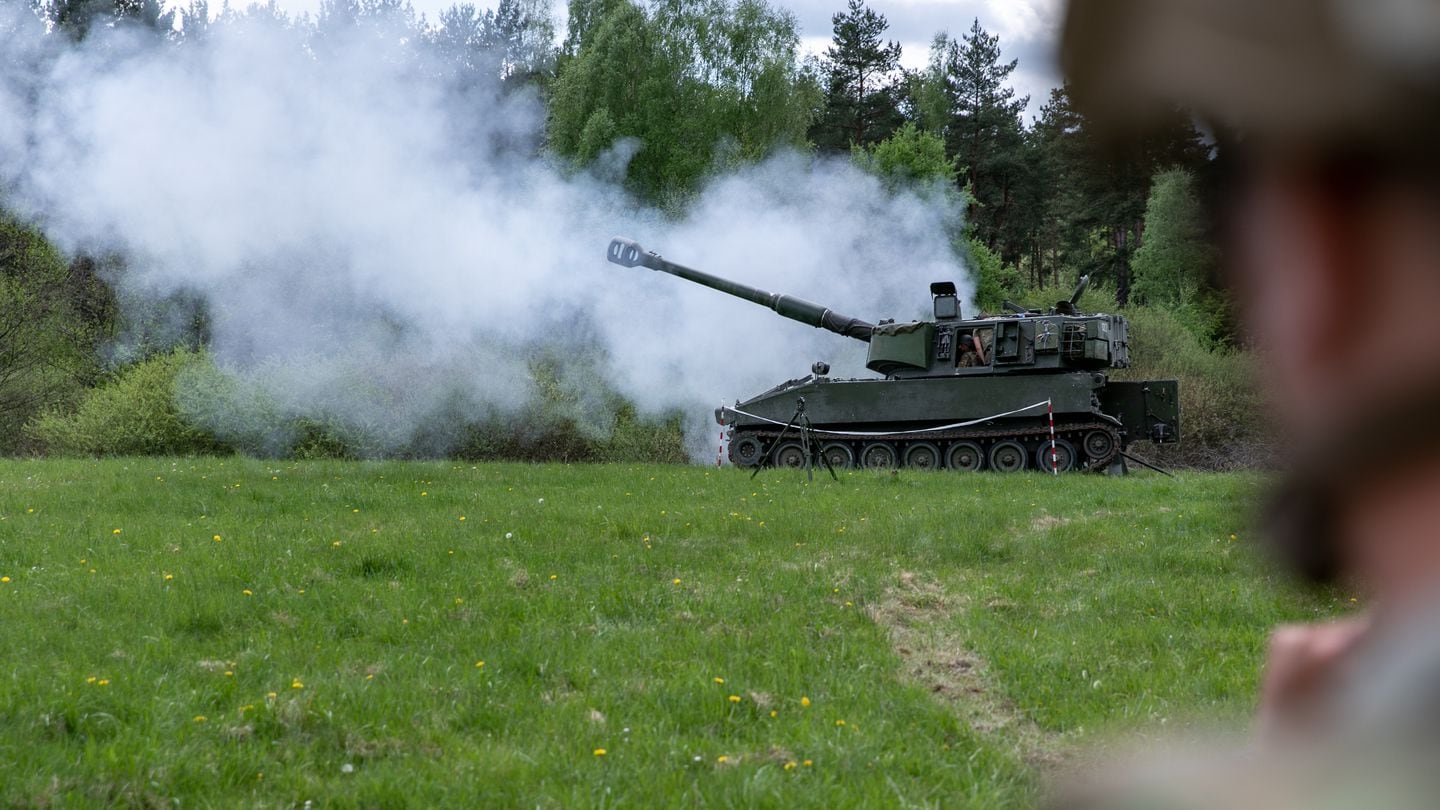

The U.S. military plans to preserve force readiness as a top priority, even if Congress fails to pass a defense spending bill next week. But service leaders fear cuts and cancellations would have to be made to training considered vital to preparing for joint and allied high-end operations against adversaries.
A full-year continuing resolution that would keep fiscal 2023 spending levels through the rest of 2024 means the U.S. Army, for instance, would run out of operations and maintenance funding in the European theater as it trains Ukrainian soldiers to defend against Russia’s ongoing invasion of the country, which has entered its third year.
The financial strain is compounded by the lack of certainty over whether Congress will pass a supplemental funding package that would reimburse the Army for expenses incurred so far in bankrolling support to Ukraine.
The Army already spent $500 million in the European theater in operations and maintenance, and “we were counting on a supplemental to be able to sort of replenish us for that,” Army Secretary Christine Wormuth said at a Feb. 27 Defense Writers Group event. “What that means is probably by late spring, summer, we would have to make some difficult choices about other [NATO] exercises, for example, that our forces participate in.”
Additionally, the Army has been funding support to Israel to include deployments of units to the Middle East in the event they are needed, she added.
Army Under Secretary Gabe Camarillo told reporters Feb. 28 at the Pentagon that the service spent $100 million in U.S. Central Command’s area of operations as well as another $500 million to support the U.S. Southwest border security mission.
“I do worry. Our budget has been flat for the last couple years. We don’t have a lot of cash under the sofa cushions, and if we don’t get a budget and we don’t get a supplemental, we’re going to probably have to cancel some things,” Wormuth said.
The Army is prioritizing current operations, Camarillo said, which means it is “going to have to look to other areas of O&M spending where they “can potentially take some risk,” including “exercises and the degree to which we participate in some around the globe. We might have to scale some of that back in the absence of an appropriation this year.”
For the Air Force, Kristyn Jones, who is performing the duties of the service’s undersecretary, told reporters alongside Camarillo that in order to pay its personnel, training exercises would take the hit.
“Anything that’s already on a [Foreign Military Sales] case won’t have a dramatic impact, but all of the replenishment that we’re expecting in the supplemental is currently impacted. And even things like F-35 [fighter jet] training that we’re planning … with our allies and partners, that’s impacted by not having this appropriation as well.”
The Air Force is focused on trying to ensure flight hours are maintained, but it’s also important, Jones noted, that pilots receive training.
Despite the military’s experience in warfare, “we’re in a different strategic environment and we need to do the exercises, often joint and allied, to prepare for that environment. And the lack of our ability to do that doesn’t allow us to, again, to test the new techniques, the new military tactics that we’d like to have primarily for an Indo-Pacific fight,” Jones said. “That’s really where we need to stretch our muscles a little bit more.”
Learning from sequestration
With a possible extended or full-year continuing resolution, the service undersecretaries said the last time the military felt such a painful budget crunch was during the 2013 sequestration, where the services were required by law to make percentage cuts evenly across spending lines.
One of the fallouts of the 2013 sequestration was a rise in aviation mishaps because vital training flight hours were cut. Military Times and Defense News took a deep dive into aviation mishaps from FY11 through FY18 and uncovered the trend.
“Safety is always going to come first,” said Navy Under Secretary Erik Raven, “but we did look at the lessons of 2013 and sequestration, where we spread risk around the enterprise, and I think the concerns about maintaining ready and trained forces are part of the lessons that we’re using to inform if we get into this worst-case scenario where we don’t have our ’24 budget enacted and we are under a CR.”
“We’re not going to repeat that same peanut butter spread,” he added.
But trade-offs will be inevitable, he acknowledged, and “we’ll have to look across the board to see how to maintain the focus on current operations.”
Jen Judson is an award-winning journalist covering land warfare for Defense News. She has also worked for Politico and Inside Defense. She holds a Master of Science degree in journalism from Boston University and a Bachelor of Arts degree from Kenyon College.